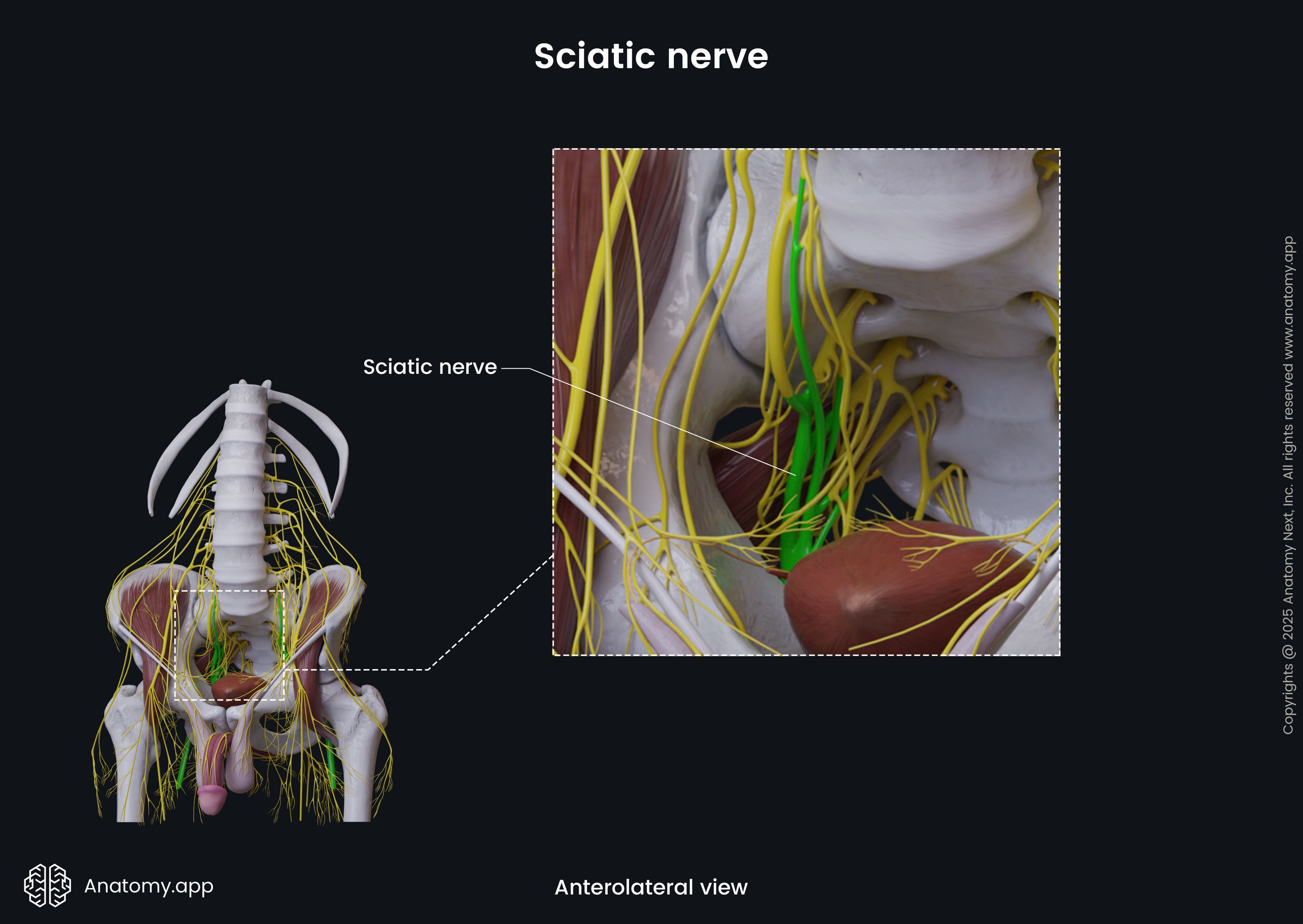- Anatomical terminology
- Skeletal system
- Joints
- Muscles
- Heart
- Blood vessels
- Lymphatic system
- Nervous system
- Respiratory system
- Digestive system
- Urinary system
- Female reproductive system
- Male reproductive system
- Endocrine glands
- Eye
- Ear
Sciatic nerve
The sciatic nerve (also known as ischiadic nerve, Latin: nervus ischiadicus) is a large nerve arising from the sacral plexus that innervates the muscles of the pelvis and thigh.

The sciatic nerve originates from the ventral branches (anterior rami) of the fourth and fifth lumbar nerves (L4 - L5) and from the first, second and third sacral nerves (S1 - S3).

The sciatic nerve exits the pelvic cavity via the infrapiriform foramen and then descends along the posterior surface of the internal obturator, superior gemellus, inferior gemellus and quadratus femoris. Further, the sciatic nerve passes between the muscles of the posterior group of the thigh and the adductor magnus. Upon reaching the upper part of the popliteal fossa it splits into two terminal branches: the tibial nerve and the common peroneal nerve.
On its course the sciatic nerve gives off several motor branches that supply the muscles of the pelvic girdle - piriform, internal obturator, superior gemellus, inferior gemellus, quadratus femoris, and the muscles of the thigh - biceps femoris, semitendinosus, semimembranosus, adductor magnus.